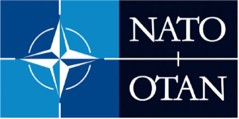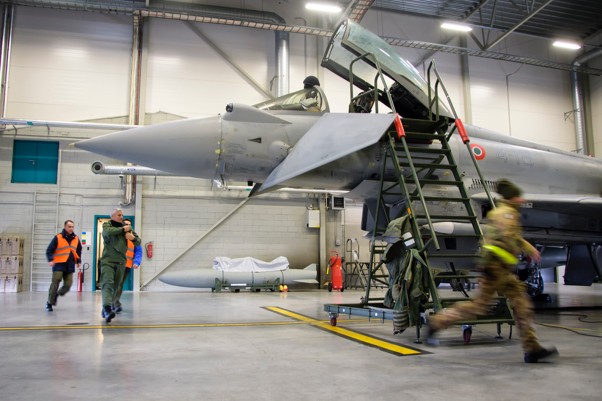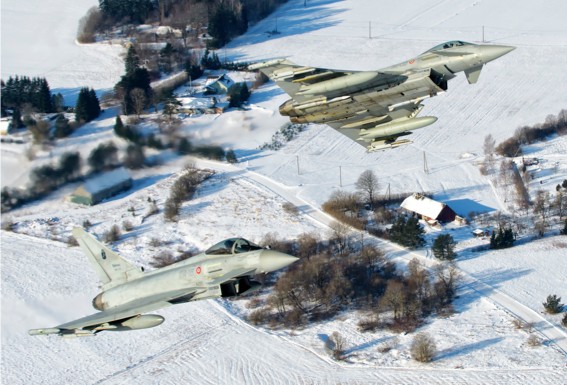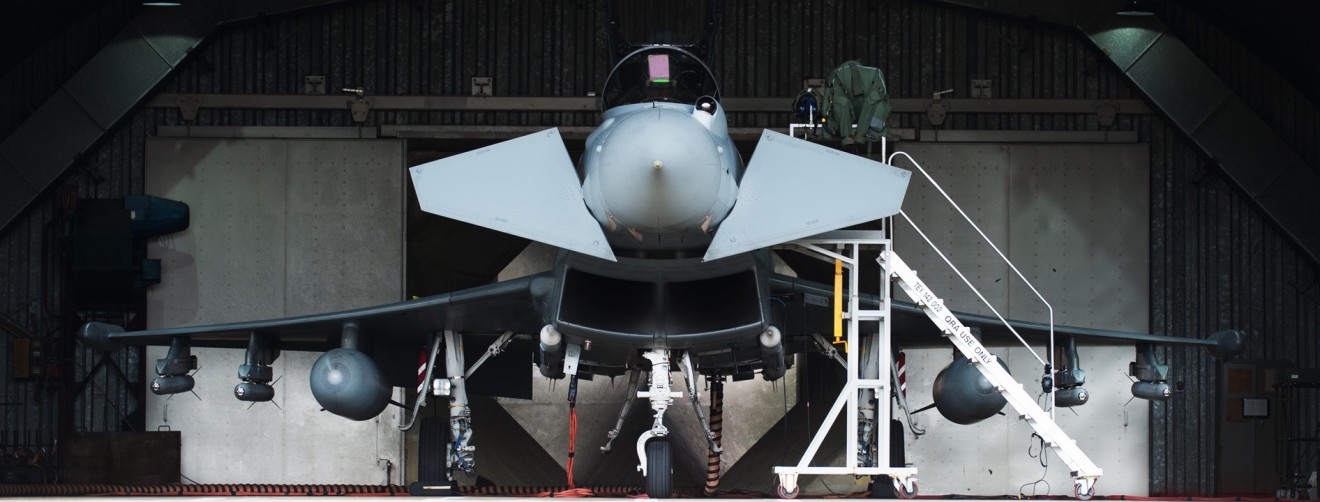The mid-air circles were the pilots’ desperate SOS signal. German Eurofighters, who were on Quick Reaction Alert (QRA) duty at Neuburg Air Base, were scrambled and, within minutes, they reached the stricken aircraft. After making eye contact with the pilot the Eurofighters escorted the plane safely down to Hamburg Airport. Later it turned out the aircraft had lost its radar connection and communications. It had effectively been flying blind.
Air policing of Europe

On any given day there are around 30,000 air movements over Europe. Most of those take place over Western Europe, with Frankfurt, Charles de Gaulle in Paris and Heathrow in London the major hotspots. 30,000 flights. Every single day. When you’re dealing with so much activity, things can, and occasionally do, go wrong.
The question is, what happens next? How do you find out if a plane is merely suffering a short term technical difficulty, illness in the cockpit, or it may even have a hijack situation? What happens and who calls the shots?
The answer to that final question is NATO’s Allied Air Command. It has two Combined Air Operation Centres (CAOCs) which deal with air policing and they’re responsible for the north and south of Europe respectively. The northern centre is in Uedem, Germany, the southern in Torrejón, Spain. All the command and control installations and radar sites dotted right across the European NATO area feed into the two CAOCs. The overview provided from all this incoming data is known as the Recognised Air Picture.
Taking the ‘launch’ decision

A scramble decision will only be made if the Commander feels something is not right — an aircraft may have put out a distress signal, veered off its planned route or failed to respond through the usual channels. At that point, he makes the call for a QRA aircraft. It’s then that the respective nations — who each have aircraft and pilots on the ground in a state of 24/7 readiness — send up their air forces to actually carry out the mission.
If the issue is reported in the vicinity of the UK then the likely course would be to launch a Royal Air Force QRA team, a two-ship formation. Within minutes of the call from the CAOC they’re airborne and often the crews only find out the full detail of the alert, where they are heading and why, after they’ve actually taken to the skies.
Exactly which air base is given the job can depend on various factors like the direction of the flight that’s being tracked.
This protocol has existed since the 1960s when NATO nations together agreed to have a single standard of safety and security in the skies. (That said, there are some nations, including Denmark and Turkey, who still scramble under their own national authority discretion. However, all activities are coordinated by Allied Air Command.)
Baltic and Enhanced Air Patrols
Of course, not every scramble is triggered because of a technical issue. NATO deals with a lot of QRA activity particularly over the Baltic states of Latvia, Lithuania and Estonia — where activity from Russian aircraft is closely watched.
NATO’s Baltic Air Policing regime started in 2004 after the three Baltic States joined NATO, with a detachment in Lithuania covering all three Baltic states (the three states don’t have fighter jet capabilities that could perform Air Policing, which is why Allies take turns deploying their fighters). But, following increased tensions in the region, this was beefed up with a second detachment in Ämari, Estonia. These detachments rotate on a four-month basis.
NATO’s stance has been designed to reassure the Baltic states that the other NATO nations are standing by them by reinforcing their air policing. It’s a policy designed to be a deterrent to any further Russian provocation and clearly says that NATO has eyes in the sky.

17 of NATO’s 29 Allies have provided detachments for the Baltic Air Policing mission so far and Eurofighter Typhoons have been heavily involved over recent years with squadrons from Italy, Spain, Germany and the UK all playing their part.
The region is particularly busy in QRA terms because the adjacent Baltic Sea is a transit area for Russian aircraft from the mainland to Kaliningrad where they have a military presence.. The call to scramble isn’t made simply because the aircraft is a Russian one but rather because they sometimes pose a threat to the adjacent NATO airspace or they may be flying without transponders.
Last year Eurofighter Typhoons from the UK and Italy took on lead roles policing the skies over the Black Sea region under the auspices of NATO's Southern Air Policing mission. A detachment of four Typhoon fighter jets from the UK RAF’s 3 (Fighter) Squadron worked alongside the Romanian Air Force to police the skies over Romania. Meanwhile, Italian Air Force Typhoons from the 4° Stormo (Wing) in Grosseto were based in Bulgaria at Graf Ignatievo Air Base, close to the town of Plovdiv, for a three-month deployment.
Sharing Resources
Not all European NATO nations have the capability to provide a single standard of security for their own air space. In fact, some countries, like Iceland, don’t even have air forces.
But NATO, as one strategic alliance, has agreed to provide one single standard of security and it is therefore committed to carrying out air policing for its members — even those without an air force.
In Iceland a NATO nation sends a fighter detachment there once every four months for a short term deployment.
NATO Fast Facts NATO was founded in 1949 following the end of World War II. The countries came together to form an alliance to resist the pressure and the threat from the east, particularly after the Berlin Blockade. Despite what many assume, NATO wasn’t founded as a military alliance. It’s actually a political alliance to promote and support democracy and for consultation and cooperation in questions of defence and security. The principle of collective defence is enshrined in Article 5 of the NATO Treaty. Less well known is the one that precedes it, Article 4, which is all about consultation. It means the Allies consult one another and discuss the most appropriate response. The NATO Headquarters is in Brussels where the North Atlantic Council is chaired by the NATO Secretary, Jens Stoltenberg. The Council meets regularly at varying levels for example, Defence Ministers, Foreign Ministers, Chiefs of Defence, Ambassadors, and when the Heads of State and Government meet this is referred to as the NATO Summit. In addition, every member country has an ambassador to NATO. The NATO Air Command commander is the US General Tod D Wolters and his deputy commander is Air Marshal Stuart Evans from the UK. 25 of the 29 NATO nations are represented at Air Command in Ramstein, Germany. The biggest contributor to the headquarters is the United States with 90 personnel, followed by the British and the French, and Germany is fourth with 52 posts. In 2017 alone, there were more than 860 situations where communications were lost between civilian aircraft and air traffic control, with NATO deciding to scramble more than 80 times for this reason. > AIRCOM - Allied Air Command
